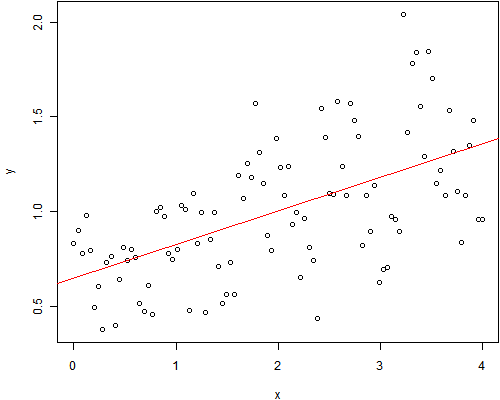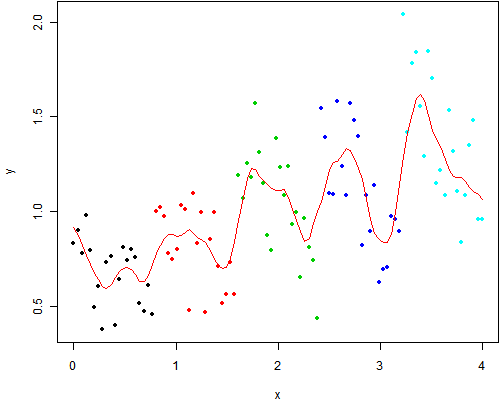同一个数据,同一个梦想?不一定。有人学了很久回归,却没有理解多元回归到底是要干嘛。

> summary(lm(y ~ x))
Call:
lm(formula = y ~ x)
Residuals:
Min 1Q Median 3Q Max
-0.633978 -0.229549 -0.004557 0.208477 0.821191
Coefficients:
Estimate Std. Error t value Pr(>|t|)
(Intercept) 0.65277 0.05837 11.184 < 2e-16 ***
x 0.17580 0.02521 6.973 3.65e-10 ***
---
Signif. codes: 0 '***' 0.001 '**' 0.01 '*' 0.05 '.' 0.1 ' ' 1
Residual standard error: 0.294 on 98 degrees of freedom
Multiple R-squared: 0.3316, Adjusted R-squared: 0.3248
F-statistic: 48.63 on 1 and 98 DF, p-value: 3.646e-10

> summary(lm(y ~ x + z))
Call:
lm(formula = y ~ x + z)
Residuals:
Min 1Q Median 3Q Max
-0.420562 -0.157195 0.008745 0.152034 0.432706
Coefficients:
Estimate Std. Error t value Pr(>|t|)
(Intercept) 0.20056 0.06235 3.217 0.00176 **
x -0.68557 0.09013 -7.606 1.82e-11 ***
z 0.72498 0.07433 9.753 4.57e-16 ***
---
Signif. codes: 0 '***' 0.001 '**' 0.01 '*' 0.05 '.' 0.1 ' ' 1
Residual standard error: 0.21 on 97 degrees of freedom
Multiple R-squared: 0.6626, Adjusted R-squared: 0.6556
F-statistic: 95.23 on 2 and 97 DF, p-value: < 2.2e-16
数据来源:
set.seed(711)
x = seq(0, 4, length = 100)
y = -x + jitter(rep(1:5, each = 20), 2)
z = rep(1:5, each = 20)
par(mar = c(4, 4, 0.1, 0.1))
plot(x, y)
abline(lm(y ~ x), col = "red")
plot(x, y, pch = 20, col = z)
lines(lowess(x, y, f = 0.1), col = "red")
summary(lm(y ~ x))
summary(lm(y ~ x + z))
注意本例中局部平滑函数lowess()函数的应用。